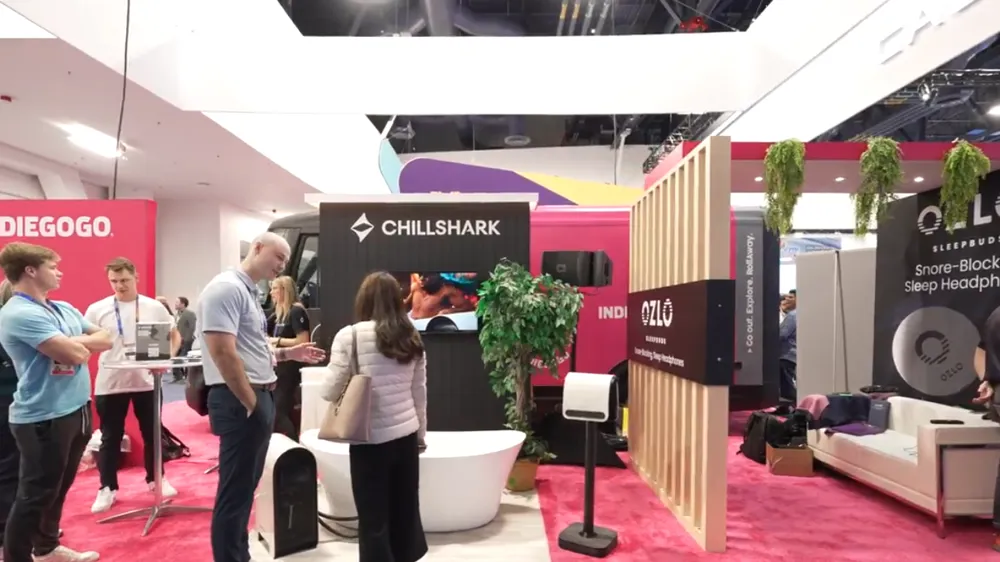Tech Apprenticeships Bolster Talent Pipelines
March 27, 2023

It’s no secret that tech has a talent problem. A global report from Gartner showed IT executives list talent shortages as the most significant barrier to the adoption of 64% of emerging technologies. It is a challenge that has inspired innovative approaches to strengthening tech’s talent pipeline. This challenge has, in turn, prompted increased interest across industry sectors in technology-focused apprenticeships.
One company, BuildWithin, launched to help tech businesses acquire and nurture talent via the apprenticeship approach. BuildWithin is a startup founded by Consumer Technology Association (CTA)® Executive Board member Dr. Ximena Hartsock Gates. Its mission is to help businesses address the labor shortage and build a more diverse tech-talent pipeline through specialized traineeships. BuildWithin’s software offers end-to-end workplace monitoring, learning, task management and real-time feedback for apprenticeships. In just nine months, BuildWithin generated nearly $1 million in revenue from customers, including CyanGate Technologies, The Downtown D.C. Improvement District, George Washington University and the Northern Virginia Tech Council.
I recently met with Ximena to discuss the tech talent shortage and why she believes industry collaboration is essential. Here are her replies. Answers are edited for length and clarity.
Why are apprenticeships important to the technology industry’s talent pipeline?
We’re seeing a deficit of workers in certain areas specific to technology, and the cause is not a lack of talent, it’s our slow training because technology moves so fast – therefore the only way to catch up and keep up with technology is by changing the way companies set up their culture internally. We believe that the employers and the organizations that do not invest in continuous learning of their staff are not going to be able to retain talent for the long term, especially young people. The incoming workforce demands that companies be more forward looking in terms of educating them and providing them with the training that will help them do their jobs better because their jobs are changing and will continue to be change. This also provides upward mobility and access to better opportunities.
Learning organizations nowadays are not limited to schools - companies are learning organizations, especially tech companies due to the fast rate of innovation. By starting apprenticeship programs where you give the opportunity to someone that may not have all of the competencies yet but has the potential and transferable skills that can apply to that role after an apprenticeship program, you allow the company to use those foundational skills, and build upon them.
And at the end of that one-year of the apprenticeship, you have a competent employee in that role that did not necessarily have to go to college; they do not necessarily have ten years of experience, but they have the learning skills, the drive, the grit and the willingness to learn alongside their peers.
What inspired you to focus on improving tech’s apprenticeship pipeline?
I’m a tech founder, this is not my first company – in my previous tech startup, I saw the hundreds of difficulties that exist in hiring technically adept individuals. I realized that most companies fish in the same talent pool, making the talent pool really narrow, because we don’t graduate enough software developers – or enough of almost any specialty for the tech workforce – to supply that demand. I realized we were competing with much larger companies, and it was hard for us to attract that talent, especially because it was a tech startup and not in Silicon Valley.
So we created an apprenticeship program that ran for eight years, a tech apprenticeship program that featured a standardized curriculum. It was so successful that it became a retention and recruiting tool – 30% of our workforce came from the program, from roles in customer service, management, sales and more. We were able to fill so many vacancies through it that it allowed us to become a learning organization and, through mentoring, managers also learned to be better managers, and we established a culture of continuous learning, teaching and coaching.
I told a few of my coworkers, team members and my ex-boss that we should do this, we could scale this program, and we have. That’s where the idea for starting software and services to scale technology apprenticeships started.
The program at my previous company, Phone2Action, was called the Civic Fellowship Program, and it was a pre-apprenticeship and apprenticeship program where we invited 100 people from different parts of the country to spend a summer or a year with us, learning a role in technology. About 30% of them stayed with us as full-time hires. That experience is what gave us the idea to start BuildWithin, because we realize that apprenticeships were very new, almost nonexistent, in the technology space.
What sets BuildWithin apart from other talent management systems?
BuildWithin is a skills technology – it’s not just an HR tool or an education platform. It’s a skills platform that helps companies have access to tools that elevate or enhance a positive interaction between someone that’s learning a role and it could be someone in their first year or being onboarded – it helps with the process of getting acclimated to a new job, or help someone with a non-traditional background enter a role that has some technical aspects or it can be used for full software developer roles.
BuildWithin helps organizations support the behaviors of working every day as a new employee and being productive. It helps the manager supervise, coach and mentor a person without it being a burdensome job on the manager. There is a misconception that apprenticeship or internships are a burden on the manager but the reality is that they want their team members be productive so the tools help apprentices get un-stuck so they can seek out guidance themselves. Our standardized curriculum is also federally approved by the Department of Labor, so our companies don’t have to go through the bureaucratic process of getting approvals for their workplace learning program. These curricula include operations management, videography, graphic design, etc.
There are many that don’t go to college and, for them, these careers can be perceived as unattainable. At the end of one year working as an apprentice, you get certified in that role – you are a graphic designer, software developer, etc. Salaries jump dramatically when you have two to three years of experience, and the employee retention rate is higher. Also, we are an approved intermediary, so we can help companies starting workplace learning programs avoid liabilities.
Why should organizations interested in addressing tech talent get involved with CTA?
There is no better moment than now to create or invest in people and launch new technologies. You can’t do that without innovating, and CTA understands what businesses have to do to keep innovating. Startups need other entrepreneurs that have gone through that journey to give guidance and coaching. You have access to standards, lobbying and political engagement with policy-makers, and you’re not going to get that on your own. To me, any organization that is interested in facing the challenge of our skills gap should join CTA. In this time of layoffs, being part of a community and an organization that runs so many great networking opportunities, this is the most important time to join.
I’m a very proud member of CTA, ever since I launched my first tech startup, and I don’t think I would have been able to succeed with that company without being a member of CTA. Join; the money you spend on the membership pays you back immediately. Plus, you also get to go to CES for free!
When businesses join CTA, whether they’re established brands or startups like BuildWithin, they attain visibility as they benefit from resources that help them achieve strategic objectives. Find out what CTA can do for you.
Join our community of innovators and shape the future of technology.



